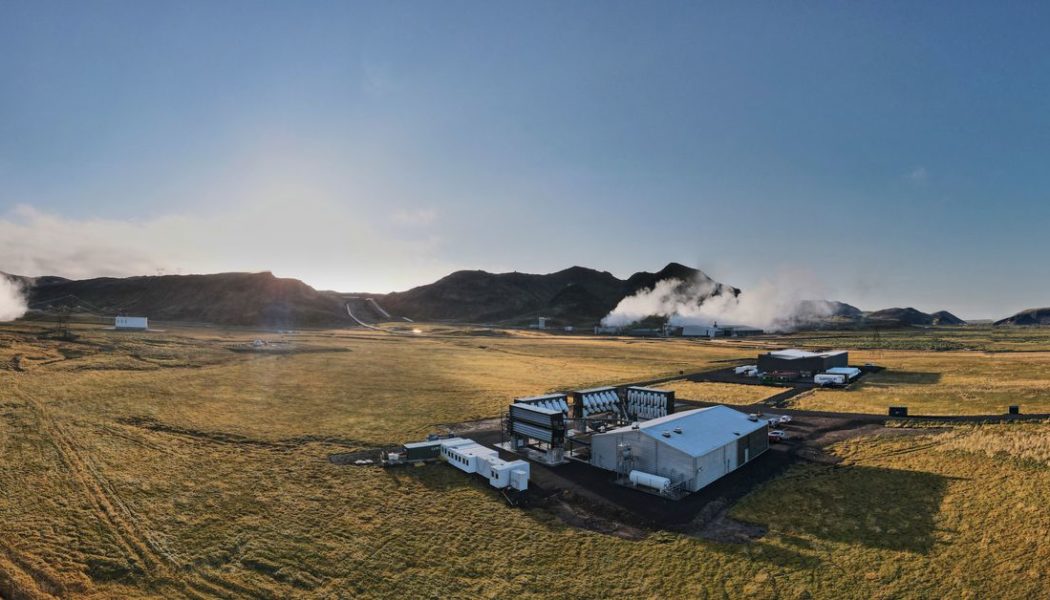/cdn.vox-cdn.com/uploads/chorus_asset/file/24126724/1236290568.jpg)
Swiss company Climeworks plans to phase out the first-generation technology that made it a pioneer in the business of carbon removal. The move is part of Climeworks’ pivot away from selling its captured carbon dioxide to companies like Coca-Cola. Instead, Climeworks says it will focus on efforts to store the CO2 underground permanently.
Climeworks became the first company to suck carbon dioxide out of the air and sell it as a product back in 2017. That’s when its direct air capture (DAC) plant called Capricorn opened in Hinwil, Switzerland. Beyond being foundational to Climeworks’ continued growth, Capricorn’s mere existence was a major milestone for the brand-new carbon removal industry. Five years later, Capricorn is essentially outdated climate tech.
Capricorn’s mere existence was a major milestone for the brand-new carbon removal industry
Climeworks announced that it has “complete[d] the commercial operation phase of its DAC facility in Hinwil, leading to the phase-out of its first generation technology.” In other words, the plant is no longer capturing CO2, Climeworks press manager Judith Hebekeuser confirmed with The Verge in an email.
Climeworks made clear in its announcement that it now prioritizes “scaling its permanent carbon dioxide removal.” And Capricorn just wasn’t built to permanently remove the planet-heating gas from the atmosphere. It started off supplying CO2 to a greenhouse nearby that used it to help grow vegetables. Then Coca-Cola HBC Switzerland came along in 2019 and started buying the CO2 to carbonate mineral water. That was the first time that direct air capture technology was used in the beverage industry, according to Climeworks. Capricorn showed the world that the technology to capture CO2 directly from the air could work at a commercial scale.
The challenge is that popping bottles of seltzer will eventually release that CO2 back into the air. And Capricorn, which started off as a demonstration project, was not capturing very much CO2. To really make a dent in climate change, massive amounts of carbon dioxide need to be drawn down and permanently stored.
That’s what Climeworks’ newer efforts aim to do. In September 2021, it opened the largest direct air capture plant operating yet, called Orca, which is capable of removing 4,000 tons of CO2 from the air a year compared to the several hundred tons of C02 Capricorn captures annually. In June, Climeworks broke ground on Mammoth, which is expected to capture nine times more CO2 than Orca. Both Orca and Mammoth are strategically located in Hellisheiði, Iceland — where relatively young basaltic rock formations can provide ample storage for the captured CO2 near the facility where it’s captured.
Funnily enough, Climeworks’ Iceland operations are still making a kind of sparkling water with help from the company Carbfix that it partners with to store the CO2. After being filtered out of the air (using what look like shipping containers filled with giant fans), each ton of CO2 gets mixed with around 27 tons of water. That fizzy water then gets injected into the ground, where it will react with the basaltic rock to create carbonate minerals. The idea is that, once the fizzy water has transformed into solid rock, we won’t have to worry about the CO2 escaping and heating up our planet.
If this all sounds very cutting edge, that’s because it is. Before Capricorn, there wasn’t much work outside of labs to tackle climate change in this way. To be sure, there’s still a long way to go to prove that the technology, economics, and policy surrounding carbon removal can align enough to have a significant impact on the climate crisis. Capricorn’s initial success has been part of that journey. Now, as the facility takes a back seat to more permanent carbon removal endeavors, Capricorn is marking another turning point for the industry.
Update Oct. 21st, 5:10pm ET: This post has been updated with an email from Climeworks.








